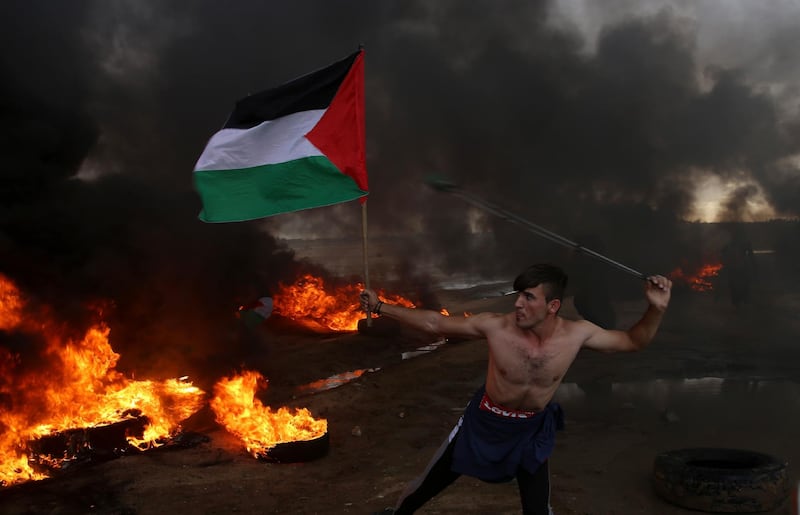Gaza protest leaders are calling for calmer border demonstrations Friday to give a chance to efforts to reach a long-term truce with Israel after months of deadly unrest, a source in the organising committee said.
An official from the Islamist movement told the Haaretz newspaper that groups in the Hamas-controlled Gaza Strip have agreed to stop protesters from burning tyres, throwing firebombs and approaching the border, amid an Egyptian effort to push for a ceasefire with Israel.
The announcement follows Israel's expansion of a fishing zone off Gaza's coast.
However, previous such hopes for a deal have been dashed since protests and clashes along the border between Israel and the blockaded Gaza Strip began on March 30.
It was not clear if demonstrators would heed calls for calm.
Egypt and UN officials have been engaged in indirect talks between Hamas, the Islamist movement that runs the Gaza Strip, and Israel.
An Egyptian delegation was in Gaza on Thursday for further discussions.
"Friday's events will be quiet," an official from the committee in charge of organising the marches told AFP Thursday, on condition of anonymity.
The committee is technically independent from Hamas, but includes representatives allied to the Islamist movement.
The official said the agreement to quieten the border Friday "will give an opportunity for the success of the Egyptian efforts to (achieve) calm and lift the siege."
Protests would still go ahead, he said, but demonstrators would be encouraged not to approach the fence too closely, burn tyres or send balloons equipped with incendiary devices across the border.
Recent weeks have seen efforts by the UN and Egypt result in Qatari-funded fuel deliveries for Gaza, easing a severe electricity shortage.
There have also reportedly been talks with a view to Israel allowing Qatari cash into the Gaza Strip to pay public salaries.
But last week, hopes for a deal were dashed by further border violence.
Seven Palestinians died in renewed clashes along the border last Friday.
Hours later, Islamic Jihad -- a Hamas-allied militant group -- fired dozens of rockets at Israel, which responded with extensive air strikes.
In a statement after a meeting of their leaders in Gaza on Thursday, Hamas and Islamic Jihad said the marches would continue.
Both groups praised Egyptian and UN efforts to broker a deal.
Since often violent protests began on March 30, at least 218 Palestinians have been killed by Israeli fire.
___________
Read more:
A new capital? Palestinians say Abu Dis is no substitute for East Jerusalem
There was a deeper, darker agenda afoot when the US administration cut UNRWA funding
Jerusalem mayor pushes ahead with proposal to remove UN agency from city
___________
Israeli snipers have also maimed hundreds by aiming at their lower limbs in a bid to incapacitate them, according to rights groups. Israel says it is trying to prevent incursions into its territory.
One Israeli soldier has been killed by a Palestinian sniper.
Demonstrators are calling for Palestinian refugees to be allowed to return to the homes their families fled or were expelled from in the 1948 war surrounding the creation of Israel and which are now inside the Jewish state.
Israel and Palestinian militants in Gaza have fought three wars since 2008 and the recent unrest has raised fears of a fourth.





